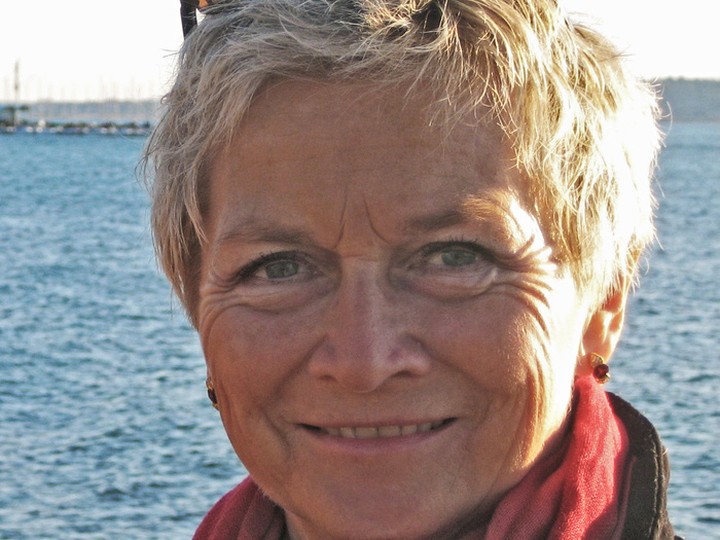surrey woman with broken hip waits nearly 12 hours for ambulance
"well, i don't know where it was coming from, alberta or manitoba, but it finally arrived at seven o'clock in the morning."

b.c. ambulance
shane mackichan
/
png files
b.c.’s ambulance service has launched a review after a south surrey senior who broke her hip waited almost 12 hours for an ambulance despite living a 10-minute drive from a hospital.
it happened on a night where three in every 10 metro vancouver ambulances were left parked because of a shortage of paramedics.
jaqui joys, 72, tripped on her tile floor aug. 6, fell and hit her head. she didn’t know yet that she had also broken a hip but she knew she couldn’t move, at least not enough to get in a car.
“i think i was just in shock. fortunately, i had a telephone that i could reach on the counter, so i was able to call 911.”
she called the emergency line sometime between 7:30 p.m. and 8 p.m. and then rang her son, who helped her move to a more comfortable chair to wait.
by this time, she said there was searing pain down her leg, so her son called 911 again to find out why the ambulance was taking so long. they were told paramedics were on the way, but it wasn’t until 10 hours later that an ambulance arrived.
her son called four or five times during that wait.
“every time he called, they said it was on its way but the ambulance never came,” she said. “well, i don’t know where it was coming from, alberta or manitoba, but it finally arrived at seven o’clock in the morning.”
advertisement
she didn’t take any medication for the pain at first as she waited because they didn’t know what they were dealing with and whether she’d need surgery. her son said after six hours, she took something for the pain.
b.c. emergency health services confirmed they received a call at 7:11 p.m. on aug. 6 and paramedics arrived at 6:44 a.m. the next morning.
“throughout the evening, several ambulances were dispatched to this call, but while en route, the paramedic crews were subsequently diverted to other calls, which were triaged as potentially life-threatening,” the ambulance service said in a statement. it apologized for the delay and says a review will take place.

jaqui joys, who waited nearly 12 hours for an ambulance after breaking her hip over the weekend in her surrey home.
jaqui joys
ambulance response times vary based on the severity of the injury and life-threatening symptoms. cardiac arrests, chest pain, breathing difficulties, severe bleeding and unconsciousness generally receive a lights and sirens ambulance response, the ambulance service said.
the agency said 61 of 88 ambulances scheduled were staffed in metro vancouver during the night shift, which means 27 ambulances sat idle because of short staffing.
the agency is struggling to recruit paramedics for open positions and to retain existing paramedics.
advertisement
joys, who lives alone and was at home recovering from surgery on wednesday, said she was glad she didn’t eat anything or take pain medication because she was taken into surgery quite quickly and given a partial hip replacement.
she praised the paramedics for helping her when they did finally arrive and said they were very kind and did an amazing job.
“it’s not the paramedics’ fault. the system has just broken down,” she said. “i just think something needs to change.”
the situation quickly became an election issue in south surrey where a provincial byelection will be held on sept. 10.
elenore sturko, who is the b.c. liberal candidate in that byelection, said it was unacceptable that a senior waited for an ambulance for so long.
“people deserve solutions, not more excuses. if elected, i will push for more paramedics and to improve retention through increased mental health supports,” she said on twitter.
conservative candidate harman bhangu said it was “extremely alarming” for a senior to wait so long and blamed the ndp for a failing health-care system in b.c.
“i’m sorry, but this is unacceptable,” he said in an emailed statement. “we know this isn’t just a problem in surrey. a man in ashcroft died of a heart attack recently because the nearest ambulance was half an hour away.”
advertisement
bhangu said he would push for more doctors, more nurses, more paramedics and more hospitals.
“we need more accessibility and we need to bring back all health-care workers who were fired over their private medical decisions. we need more personnel and we need to save lives.”
the ndp candidate, pauline greaves, said the ndp government has provided the ambulance service with one of the largest funding lifts of any part of the health-care system,” but said more needs to be done and she will work to provide “better, faster care.”
a shortage of paramedics was also a factor in ashcroft twice in the past month. in two cases on july 17 and aug. 14, seniors who went into cardiac arrest had to wait almost 30 minutes before the ambulance arrived.
both seniors were in distress in the same block as the ambulance station and hospital and both seniors, who received emergency first aid from ashcroft volunteer firefighters, died before paramedics could arrive.
health minister adrian dix said the ambulance service is grappling with a steady increase in immediately life-threatening or time critical calls, identified under a six-colour classification scheme as purple and red calls.
“and the only way you can respond to that is by triage,” dix told postmedia news tuesday, speaking before joys went public with her ordeal. “and so sometimes, when people say they waited x amount of time for an ambulance, it’s just because of the triaging of those calls.”
the ndp government, he said, has “invested more money in ambulances in any other area except mental health and addiction. and we’re going to keep doing that.”
leanne heppell, chief ambulance officer at b.c. emergency health services, spoke to postmedia news tuesday in light of the most recent ashcroft death but before joys’ interview.
heppell said in cases where patients and families are upset with the response time, senior leadership will meet with them to explain the circumstances and listen to their concerns.
she acknowledged the ambulance service faces a staffing crunch and that the pandemic, last year’s heat dome, wildfires and floods and staffing shortages have put stress on paramedics. she and the agency’s senior management are travelling the province to speak with front-line staff about the challenges and to come up with better recruitment and retention plans.
heppell said 78 per cent of the 500 full- and part-time permanent paramedic positions added in rural and remote areas have been filled and an recruitment drive is underway to fill the remaining positions.
the ambulance service is also analyzing where call volumes have gone up so that it can staff communities appropriately, she said.
advertisement
more news, fewer ads: our in-depth journalism is possible thanks to the support of our subscribers. for just $3.50 per week, you can get unlimited, ad-lite access to the vancouver sun, the province, national post and 13 other canadian news sites. support us by subscribing today: the vancouver sun | the province.
 5 minute read
5 minute read










